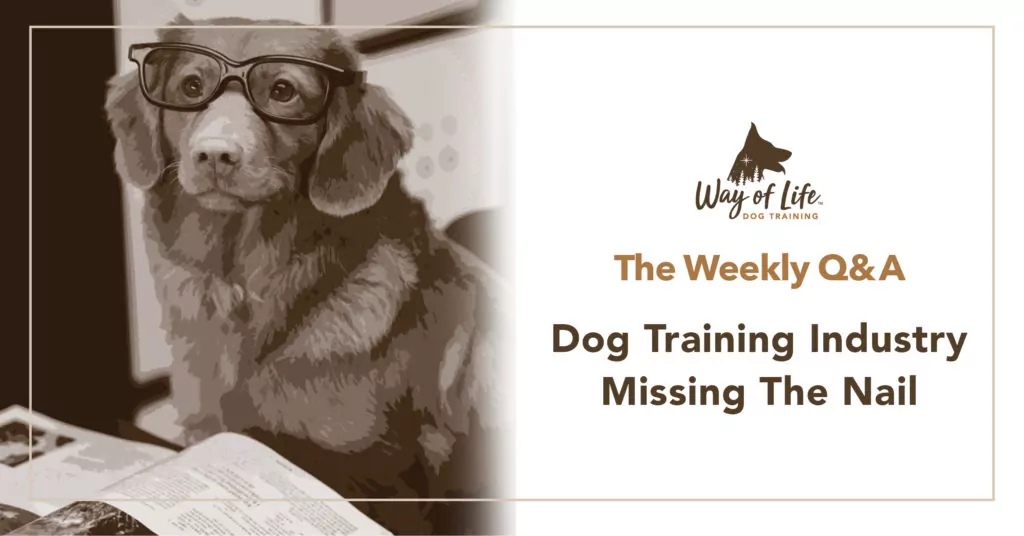
Q: I would love to learn more about your training principles and if you are taking on any interns, maybe I can be of consideration. While I have a solid understanding of behavior modification, I feel there is something in the industry that is just missing the nail. I’d love to chat some more and potentially learn as much as I can!
A: You’re not wrong to say that the dog training industry is “missing the nail.” I’ll tell you why in short: Because it’s making dog behavior and dog behavior issues all about the dog while overlooking the situation or circumstances that are causing dogs to do what they do.
Generally, we tend to attribute behavior issues to the dog’s background or breed. We focus on the dog’s early experiences as a puppy and what occurred during the critical socialization period. It’s sad that many think that dogs are ruined if they suffered adverse experiences or weren’t socialized enough, whatever that means, during that time. It’s also common to justify poor behavior on grounds that the dog is a rescue. Again, we think dogs are doomed for life if they encountered difficult experiences before ending up with us. Having worked with dogs from all kinds of backgrounds, this is simply not the case. Dogs can and want to change. In fact, they’re relieved when we challenge them and give them the chance to lay down the burdens they’ve been carrying.
We also blame the breed for any bad behavior. No doubt, genetics, breed, and breeding are powerful shapers of behavior. Given that today, most people with dogs own them as pets as opposed to the workers they were bred for, it is no wonder so many have problems. At the same time, breed alone is not cause for behavioral issues; rather, it is a three-way interaction between the dog’s breed, the dog as a unique representation of its breed, and the dog’s way of life.
Because we focus on the dog as opposed to the dog’s situation when thinking about behavior and behavior issues, it is no wonder that our techniques are also focused on changing dogs instead of changing their situation, using behavior modification through various forms of conditioning, tools to control the dog even if they hurt, and putting dogs on psychotropic medication.The reason the industry is missing the mark is because we’re making it all about the dog while glossing over the situation. We think we don’t have control over a dog’s situation when in fact it’s the only thing we do have control over.
In my book, The Way of Life Method, I talk about the five aspects that make up a dog’s situation or way of life. These include our mindset toward our dogs and relationship with them, our approach to socialization, our practices surrounding managing space and boundaries, and how well we have harnessed our dogs’ drives through exercise, training, and sport. There is so much there that can make a day-and-night difference in a dog’s behavior and yet look at what we focus on. We’ve made it all about the dogs and they have paid dearly. It is my hope and aim that my book, The Way of Life Method, sets the stage for a new conversation about dogs, one that empowers people to rethink their ways of life and heal their dogs.
To find out more going beyond training and thinking more holistically about our dogs’ way of life, check out my book The Way of Life Method: How to Heal Your Relationship with Your Dog and Raise a Sound, Strong, and Spirited Companion (At Any Age).